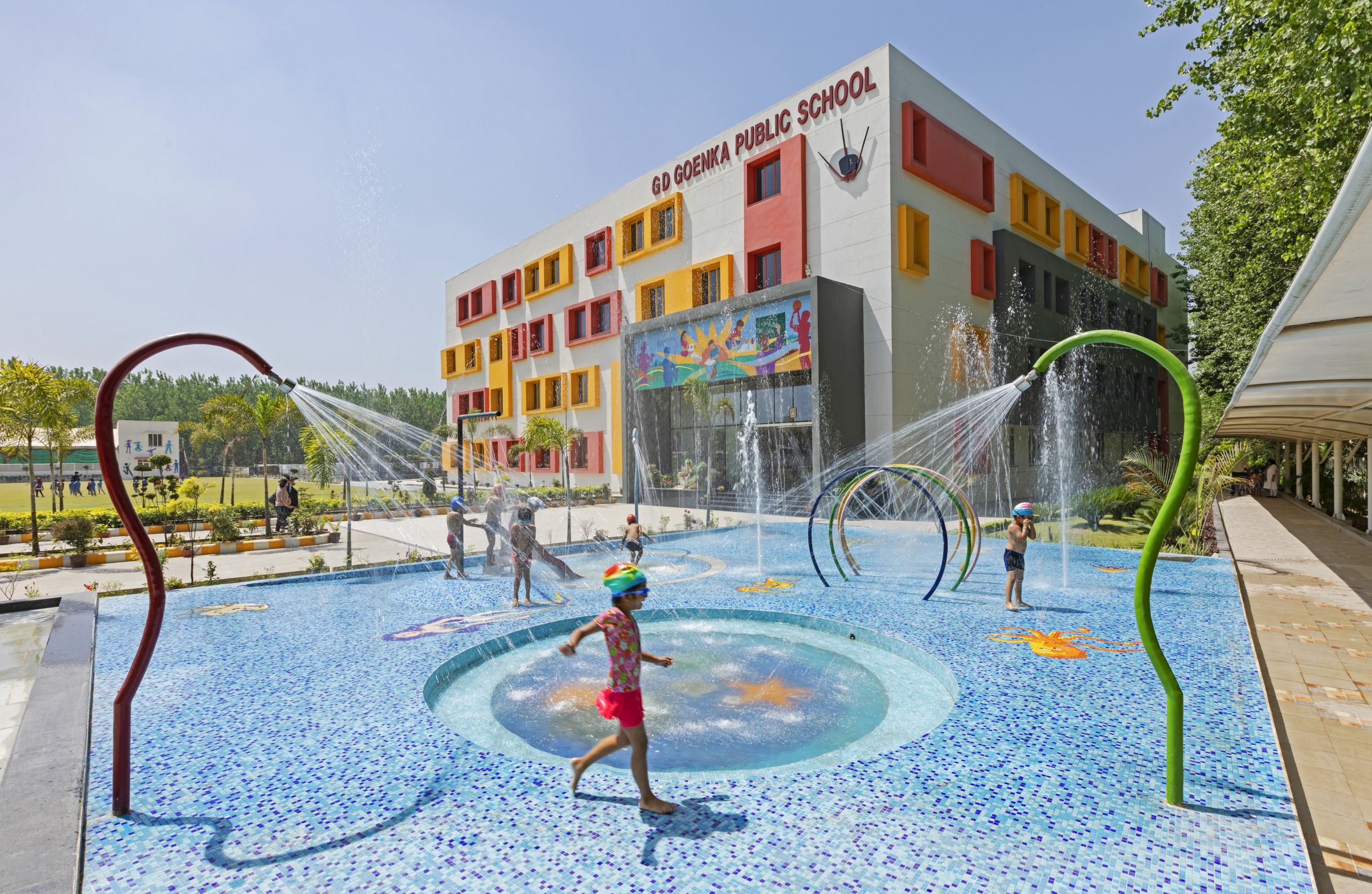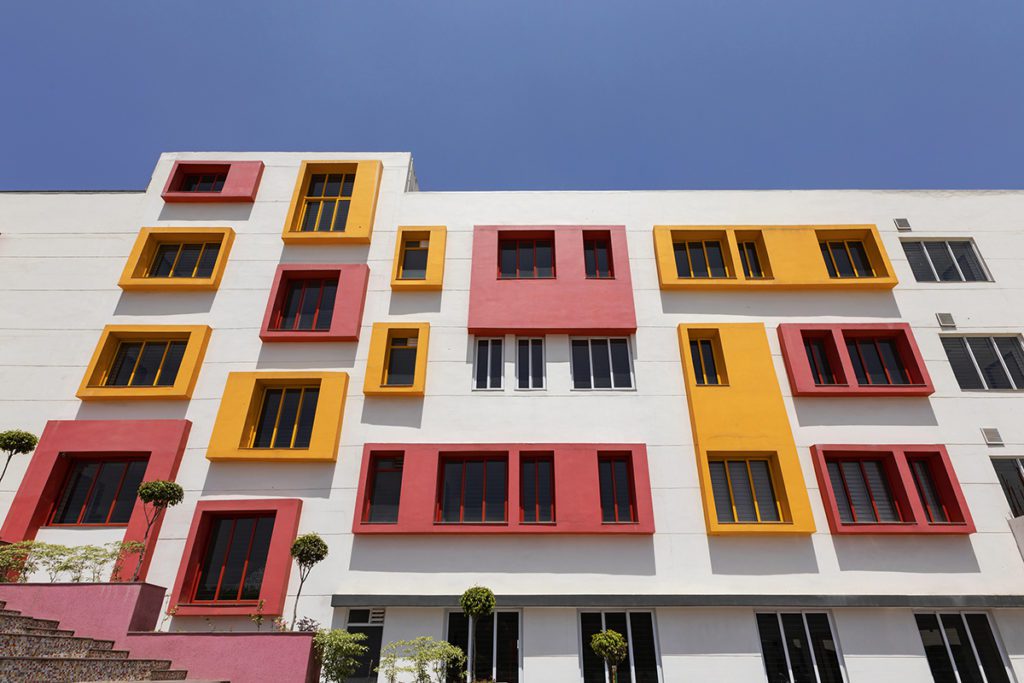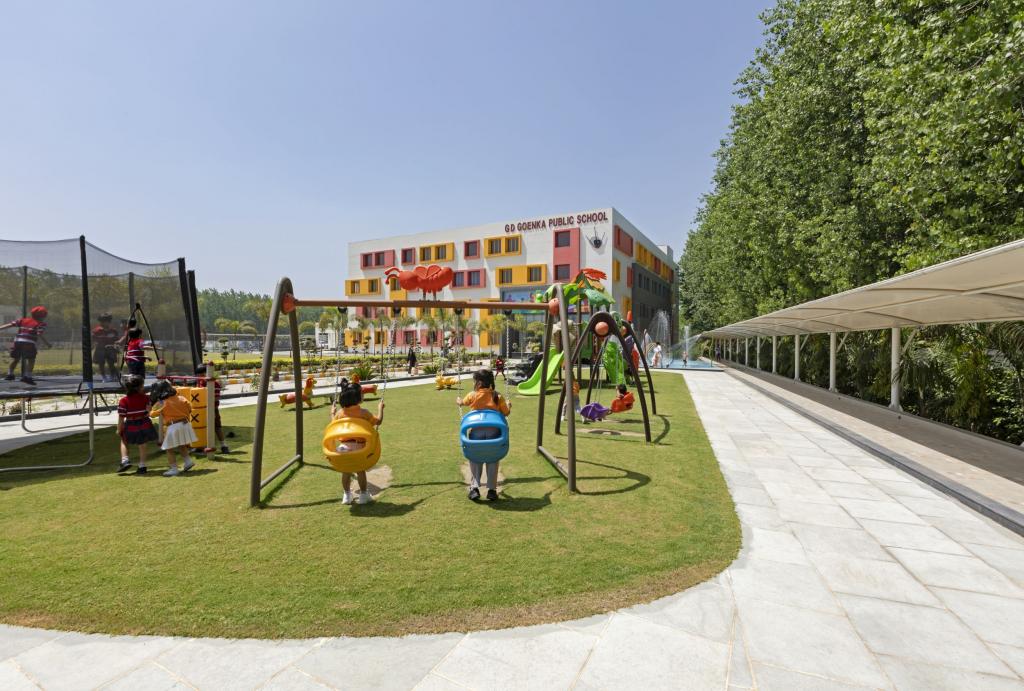
Tier 2 and tier 3 cities have lately seen a rise in real estate development, with people choosing to move away from dense urban centres. A boon for equitable distribution of infrastructure, this presents architects with the strange challenge of balancing resource-efficiency and functionality with the imageability of a project, particularly when the uptick of construction in a region could lead to a homogenous built language.
The design of GD Goenka Public School in Rudrapur, Uttarakhand, contends with these exact challenges. It employs a combination of spatial and aesthetic interventions to achieve a distinct vocabulary.
Demarcating function through colour scheme
The school building is separated from the campus entrance by sprawling lawns. In doing so, the 2.75-acre campus appears more spacious than it actually is. The zoning of the site plan is centred around three parallel courts. Two of them are enclosed by academic blocks, forming the junior and senior wings of the school, while the third court features an open-air theatre. The OAT connects both wings, forming the social core of the campus.
The colour scheme of each block corresponds to its role within the spatial hierarchy. The G+3 Academic Wings are swathed in white; while the central OAT is characterised by an earthy pink tone to distinguish it from the more rigidly functional zones of the school.

Using the facade for visual engagement
The façade of the building is characterised by concrete sun-breakers in vivid shades of coral and chrome yellow. Presenting a strong contrast to the white mass of the building, these sun-breakers resemble building blocks – their size, colour and asymmetric arrangement evoking a sense of whimsy. They work to bring down the scale of the structure, making it feel less imposing.
The colour scheme of the facade has been followed in the school interiors as well; wall accents and laminates in warm and vibrant colours complement the muted wooden furniture, all placed against a white backdrop.
Climatically responsive facade design
The colour scheme of the project contributes towards a passive cooling effect – maintaining a cool indoor climate. The predominant use of white in the facade reflects most of the incident sunshine and reduces heat absorption. White terrace tiles provide added insulation at the roof level, and the colourful sun-breakers further cut down direct glare. These interventions help create an indoor environment that responds to climatic fluctuations with ease.
Surrounded by green fields and articulated by colourful frames, the white mass of the school building is softened; and its distinct appearance renders it approachable yet memorable, meeting the goals of the client as well as capturing the imagination of its students. The design of GD Goenka Public School in Rudrapur enhances a climate-responsive spatial layout with visually appealing building elements to create an engaging and sustainable learning environment.




